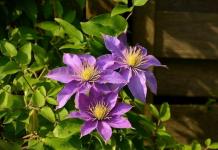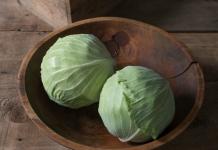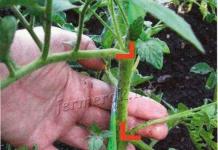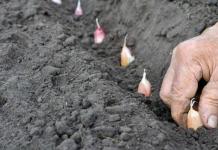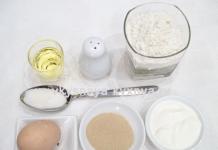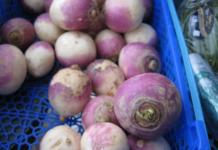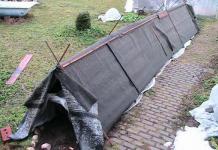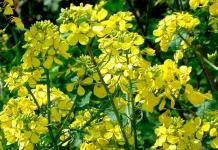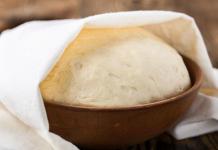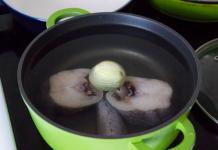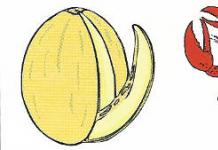
WHITE CABBAGE.
The first feeding is carried out 20 days after planting seedlings: 0.5 l of mushy mullein is added to 10 l of water, 0.5 l is spent per plant.
10 days after the first feeding: in 10 liters of water add 0.5 liters of mushy mullein or 0.5 liters of chicken manure infusion, 1 tbsp. a spoonful of urea. For 1 plant - 1 liter of infusion.
Early July. Feed only mid- and late-ripening varieties of cabbage. For 10 liters of water - 2 tbsp. spoons of superphosphate and 1 teaspoon of trace elements. 6-8 liters are used per 1 m2.
August. Feed only mid- and late-ripening varieties. For 10 liters of water - 1 tbsp. a spoonful of nitroammophoska. For 1 m2 - 6-8 liters.
In the first 2-3 weeks after planting seedlings, excessive soil moisture in the upper layer is undesirable, since the root system must penetrate into the deeper layers, where moisture reserves are more stable.
With optimal soil moisture, the growth of the inner leaves of a cabbage plant occurs a little faster than the outer ones, so they are tightly pressed against each other from the inside, forming a dense head. Soil moisture fluctuations lead to uneven growth of inner leaves and cracking of heads.
So that ripe heads of cabbage do not crack, they need to be bent several times in one direction - to disrupt the root system. This will stop the access of nutrients and slow down the growth of cabbage.
For prevention against aphids, snails and slugs, plants and soil are dusted with wood ash (1 cup per 1 m2).
1:30831:9
CAULIFLOWER.
To form a yield unit, it needs about 2 times more nutrients than white cabbage. The highest need for phosphorus, nitrogen and potassium are needed. With a lack of boron, the apical buds die off, voids form inside the head and in the stump, and the head rots.
With a lack of molybdenum, large leaves are formed, the heads become ugly. When growing on sandy soil, additional manganese is required. Therefore, cauliflower must be fed with microelements.
The first top dressing is given 5-7 days after planting the seedlings - with a solution of urea (2 tablespoons per 10 liters of water per 10 plants) and potassium nitrate (1 tablespoon) with the addition of 1 teaspoon of microfertilizers.
The second feeding - at the beginning of the formation of the head, for 10 liters of water - 3 tbsp. spoons of nitroammophoska. Fertilizing with organic fertilizers is useful: bird droppings diluted with water 20 times, or mullein diluted with water 10 times, or slurry diluted with water 4 times.
To obtain snow-white heads, they are covered from the sun: 2-3 sheets are broken or tied over the head.
1:20871:9
Radish.
Like any early crop, it is very demanding on soil fertility and responsive to fertilizers.
To protect seedlings from the cruciferous flea, they are pollinated with tobacco dust mixed with lime or ash (1: 1). To some extent, the flea is repelled by sprinkling seedlings with road dust.
When sowing and caring, potash fertilizers and ash are not used, otherwise the plants may shoot themselves. Good fertilizers are compost and nitroammophoska.
1:799ONION.
Fresh manure is not brought under the onion, otherwise growth is delayed, the formation of leaves does not stop for a long time. The bulb is formed late and does not ripen well, is more affected by cervical rot, and is poorly stored.
Onions respond well to the application of mineral fertilizers. However, its root system is sensitive to increased salt concentration, so it is better to apply them in small portions for 2-3 times.
Immediately after the emergence of black seedlings, crops need to be fed with nitrogen fertilizers at the rate of 10-15 g / m2. When 1-2 true leaves are formed, the first thinning is carried out, leaving 1.5-2 cm between plants. At the same time, weak plants are removed. After the appearance of 3-4 true leaves, thinning is repeated already at the final distance - 5-7 cm.
After the second thinning, fertilizing with a complete mineral fertilizer is necessary, preferably in liquid form. A good effect is given by top dressing with slurry diluted with water 5-6 times, or with bird droppings diluted 10-15 times. Add 30-40 g of superphosphate to a bucket of water. 3-4 buckets of solution are consumed per 10 m.
Stop watering a month before harvest. The last top dressing with phosphorus-potassium fertilizers is carried out during the formation of the bulb, 150 g of potassium salt and 200 g of superphosphate are added per 10 m2.
When growing onions on heavy soil, the early formation and maturation is facilitated by the disintegration of plants. In this case, carefully, without damaging the root system, the soil is raked from the bulbs.
When sown early in spring, onions are ready for harvest in late August or early September. In some years, due to unfavorable weather conditions, it does not have time to ripen by this time. To speed up maturation, plants dig in, damaging the root system, breaking the connection with the soil.
After 2-4 days, depending on the weather, the bulbs are harvested and laid out to dry with the leaves. Due to the outflow of plastic substances, the ripening process occurs and bulbs suitable for storage are formed.
Sometimes, to accelerate the ripening of the bulbs, rolling or crushing the leaves is used. However, this technique harms the crop, as the plants are damaged and pathogens penetrate the bulbs through the gaps formed. In addition, rolling does not stop growth, and with a broken stem, plants continue to grow.
1:49991:9
ONION FROM SEVKA.
When the feather reaches a height of 10 cm, the treatment of plants from diseases begins (phytosporin - every 2 weeks). When the feather reaches a height of 8-10 cm, the first feeding is carried out: for 10 liters of water - 1 cup of mushy mullein, 1 tbsp. a spoonful of urea, per 1 m2 - 2-3 liters of solution.
The second feeding - 12-15 days after the first. For 10 liters of water - 2 tbsp. spoons of nitroammophoska, per 1 m2 - 5 liters of solution.
The third - when the bulb reaches the size of a walnut. For 10 liters of water - 2 tbsp. spoons of superphosphate, per 1 m2 - 5 liters of solution.
1:916 1:926Onion fly control measures.
Onions are placed next to carrots. The specific smell of carrots repels the onion fly, and onion phytoncides - the carrot fly.
1 cup of table salt is dissolved in 10 liters of water, ridges of onions are poured from a watering can, trying not to get on the feather. The first time this is done, when the pen reaches 5 cm, watering is repeated after 20 days.
When a fly appears, the soil is sprinkled with a deterrent: 100 g of wood ash, or 1 tbsp. a spoonful of tobacco dust, or 1 teaspoon of ground pepper per 1 m2 (2 times with an interval of 10-18 days).
Measures to combat peronosporosis (downy mildew). The onion bed should have a direction from north to south, well lit by the sun. Crops and plantings must not be thickened. Before planting, the seedlings are warmed up. Feathers at a height of 10-12 cm are sprayed with a solution of copper oxychloride, every 2 weeks they are sprayed with phytosporin.
1:2424 1:9LEEK.
The first dressing - when 5-6 true leaves appear, the second - a month after the first. For 10 liters of water - 0.5 liters of mullein, 1 teaspoon of urea, potassium sulfate and superphosphate. For 1 m2 - 3-4 liters of solution.
Ashes are added once a week before hilling - 1 cup per 1 m2.
1:502 1:512GARLIC.
As soon as garlic leaves appear from the ground, plantings are fed with nitrogen fertilizer. To do this, dissolve 1 tbsp in 10 liters of water. a spoonful of urea, 10 liters - per 1 m2.
When the garlic leaves reach a height of 10-15 cm, they rake the earth from the bulb, sprinkle with ashes and return the earth to its place. This operation is repeated when arrows appear.
When removing the arrows of garlic, leave a few pieces. From them, you can easily determine the optimal harvesting time. As soon as the wrapper cracks on the heads and the bulbs begin to peek out, it's time to dig the garlic.
To improve the planting material, it is recommended to regularly rejuvenate the cultivated variety by sowing air bulbs. In the first year of cultivation, single teeth are formed from them. They are planted in the fall and the next year they get normal multi-toothed bulbs.
1:20151:9
TABLE BEET.
Likes sprinkling, loosening. When the root crop reaches the size of a walnut, top dressing is done: for 10 liters of water - 1 tbsp. a spoonful of nitroammophoska and 1 glass of wood ash. 10 liters of top dressing should be enough for 1 m2 of area.
After 10 days - the second top dressing: for 10 liters of water - 0.5 liters of mushy mullein and 2 tbsp. spoons of nitroammophoska. For 1 m2 - 5-6 liters.
After the second thinning: for 10 liters of water - 2 cups of ash and 1 teaspoon of table salt. For 1 m2 - 10 liters.
For the prevention of core rot, foliar top dressing with boric acid is carried out: 2 g per 10 liters of water.
To increase sugar content 2-3 times per season, beets are watered with a solution of table salt - 1 tbsp. spoon for 10 liters of water.
1-2 times per season, beets are fed with a solution of trace elements: 1 teaspoon per 10 liters of water.
1:1359 1:1369Zucchini, PATISSON.
During fruiting, 2-3 leaves are removed from the middle of the bush - for better illumination and ventilation. Remove diseased, old leaves lying on the ground regularly.
Why do the ovaries rot? Most likely, female flowers were not pollinated. Or there were sudden changes in temperature. Or watered the bushes with cold water. Or the ovaries were struck by vertex rot.
Decide from which plants you will take fruits for summer consumption and canning, and which ones you will leave for "winter" fruits. From the "summer" plants, the fruits are removed as often as possible, preventing them from overgrowing, the wilted corolla of the flower serves as a signal for collection. From such plants, you can collect more than 20 greens.
On "winter" plants, 4-5 fruits are allowed to form. When they ripen, they are harvested for winter storage, cut off along with the stalk.
The first top dressing - before flowering (for 10 liters of water - 0.5 liters of mullein, 1 tablespoon of nitroammophoska). Or for 10 liters of water - 2 tbsp. tablespoons ideal (1 liter per plant).
During flowering: for 10 liters of water - 2 tbsp. spoons of ash and 1 tbsp. spoon of the breadwinner, 1 liter of top dressing is spent on one plant.
During fruiting: for 10 liters of water - 2 tbsp. spoons of nitroammophoska and 2-3 tbsp. spoons of a giant, 2 liters per plant.
Additionally, 2 foliar top dressings are carried out with an interval of 10-15 days (for 10 liters of water - 1 tablespoon of urea or ideal). For one plant - 0.5 liters.
1:37021:9
TURNIP.
Turnip is best on fertile sandy loams and loams, where it turns out to be especially sweet. Do not use straw manure or feces as fertilizer. Wood ash has a good effect on growth and yield. By neutralizing the acidity of the soil, it protects plants from clubroot disease and partially provides potassium, phosphorus, calcium, and microelements. Turnips are very responsive to boric fertilizers, so foliar top dressing with boric acid is carried out twice a season (2 g per 10 liters of water).
The first thinning is done when two true leaves are formed, the second - 10-15 days after the first. At the final thinning, the distance between plants should be 6-8 cm.
Demanding to moisture throughout the growing season is very high.
In the conditions of the Middle Volga region, turnips are sown for the first time at the end of April (for consumption in June). The next sowing date (for winter storage) is chosen so that the root crops are ripe before frost - June 10-20.
1:18421:9
CELERY.
The need for nitrogen in celery is very high - the leaf rosette grows well. Phosphorus accelerates the maturation of plants and improves their quality. Potash fertilizers contribute to the accumulation of sugars and starch, increase the frost resistance of the plant. In addition, calcium and magnesium must be added to the soil under celery.
On soils with low fertility, it is desirable to apply rotted manure or compost - 6-8 kg / m2, nitrogen fertilizers - 3-5 g / m2, phosphorus - 10 g / m2, potash - 5 g / m2, manganese - 2 g / m2. Organic and phosphorus are brought in for autumn digging, the rest - half for digging, half for top dressing.
When planting celery seedlings, it is important not to deepen the outlet - the apical bud should be at ground level. Compact the soil around the roots.
30 days after planting celery - root top dressing (for 10 liters of water - 2 tablespoons of giant and 1 teaspoon of urea), use 3-4 liters per 1 m2.
In mid-July, the ground is carefully raked from the root crops and wiped with a rag. After 15 minutes spud. Watered only after 2-3 days. And here's a tip for root celery.
From the middle of summer, the lower leaves are cut off from the root celery, exposing the base of the stem.
Thick, long, juicy petioles can only be obtained when the plant grows rapidly throughout the growing season. If at one time or another the development of celery is delayed, do not expect a good harvest. Therefore, we must try to create suitable conditions - after each watering, loosen the soil so that air can flow freely to the roots, water and feed in time and, of course, weed.
Root celery is afraid of frost and reacts to spring cold with an arrow-peduncle. The autumn cold is well tolerated. In order not to risk it, it is better to plant seedlings of root celery at the end of May. Any growth retardation provokes shooting.
1:3317 1:9CARROT
Carrots give normal marketable root crops with the number of plants per 1 m of a row from 80 to 100 pieces (depending on soil fertility, with row spacing of 30-35 cm). The sparseness of crops leads to the formation of branched root crops, many of which crack.
Another reason for this phenomenon is excess nitrogen nutrition at the stage of leaf rosette formation and root growth.
The first top dressing - a month after the emergence of shoots, use 5 liters of solution per 1 m2. The second top dressing - after 15-18 days, use 7-8 liters of solution per 1 m2. For 10 liters of water - 1 tbsp. a spoonful of nitroammophoska.
In August, carrots are fed with potash fertilizer: for 10 liters of water - 1 tbsp. the spoon.
To get large carrots, they make a cone in the ground with a crowbar, fill it with humus, plant 3 seeds, then leave one of the best sprouts.
You can feed the carrots and other "dishes". The first dressing: for 10 liters of water - 1 tbsp. spoon of potassium sulfate, 1.5 tbsp. spoons of double superphosphate and 1 teaspoon of urea. The second dressing: for 10 liters of water - 1 tbsp. a spoonful of potassium sulfate, a glass of a solution of pigeon (chicken) manure and 1 teaspoon of complex mineral fertilizer.
A good result is given by foliar top dressing with boric acid (2 g per 10 liters of water).
Spraying crops with infusion of onion peel will scare away the carrot fly. To do this, pour 400 g of husks with boiling water, tightly close the lid, insist and filter for a day. The onion peel remaining after the infusion can be spread out in the grooves between the plants.
When thinning, a strong smell of carrots appears, a carrot fly flies on it. Therefore, before thinning, crops are sprayed with such a solution: for 10 liters of water - 1 tbsp. a spoonful of ground black or red pepper and 1 teaspoon of liquid soap. For 1 m2 of crops, 1 liter of solution is consumed.
1:31401:9
PUMPKIN.
Pumpkin plants, when they have 3-5 true leaves, are spudded to form additional roots. Watering is important during the growth of stems, leaves and fruits, during flowering they are limited.
2-3 lateral lashes are left on the plant, they are pinched after the formation of 2-5 ovaries, 5-7 leaves are left above each fruit.
During flowering, plants are fed once every 2 weeks. In 10 liters of water, dilute 1 liter of mullein, 2 tbsp. spoons of nitroammophoska. Under 1 plant pour 8 liters of top dressing. Or 200 g of bird droppings are diluted in 10 liters of water.
Pumpkin loves foliar feeding with urea (15 g per 10 l of water) or superphosphate (40 g per 10 l of water).
1:1160 1:1170RADISH.
Radish is moisture-loving, therefore, on sandy soils it gives a good harvest only when watered.
Varieties intended for summer consumption are sown in late April-early May, for winter - June 10-20. Radish is sown on ridges in one row with a distance between rows of 60 cm or on ridges in 3 rows with a distance between rows of 35 cm.
Thickening is one of the reasons for the flowering and poor quality of root crops. The first thinning is carried out in the phase of two true leaves, the second - in the phase of four true leaves. At the first thinning between plants in a row, a distance of 8-10 cm is left, at the second - 15-20 cm.
It is better to feed the radish with mineral fertilizers. The first dressing - when 3-4 true leaves appear, the second - 20 days after the first. For 10 liters of water - 20 g of urea, 60 g of superphosphate, 15 g of potassium chloride.
1:26661:9
POTATO.
The introduction of semi-decomposed manure or compost (40-50 kg per 10 m2) on loamy and sandy soils almost doubles the yield of tubers.
It is impossible to make fresh manure for potatoes (both in autumn and in spring). This leads to plant diseases, reduces the yield and quality of tubers.
The first top dressing is applied in the phase of the beginning of budding, before loosening or hilling. Mineral fertilizers are scattered in the aisles at a distance of 5-6 cm from the stems, and then embedded in the ground during hilling. For each bush spend 3-6 g of superphosphate, 3-4 g of potassium chloride or sulfate, 2-3 g of urea or ammonium nitrate. If nitrophoska is used for top dressing, it is taken at the rate of 10-12 g per bush.
From organic fertilizers, humus is suitable - two handfuls for each bush. Wood ash is added at the rate of one or two handfuls mixed with the same amount of soil. Dry bird droppings - 10-15 g per bush.
The second top dressing with a weak development of the above-ground mass is carried out in the phase of the beginning of flowering, mainly with potash fertilizers (30 g of potassium sulfate per 10 l of water per 10 m2). With a lack of potassium in the soil, the flesh of the tubers darkens. After feeding, the plants spud.
Immediately after the second feeding, the plants are dusted with ash. For them, this is additional feeding, and for the beetle - a clear discomfort.
To accelerate the outflow of nutrients from the leaves to the tubers and thereby increase the yield, foliar top dressing is used in the budding and flowering phase, as well as three weeks before harvesting. Even a single spraying of plants at the final stage increases the yield of tubers by 7-11%, and starch content by 0.8-1.0%. To do this, 20 g of superphosphate is infused in 10 liters of water for 1-2 days (periodically mixing well). It will take 1 liter of solution to process 10 m2 of a potato plantation.
With a lack of nitrogen in the soil, foliar top dressing is carried out during the period of budding and flowering of potatoes (20 g of urea per 10 l of water). At the same time, tops are sprayed with solutions of trace elements.
In dry and hot weather, it is impossible to deeply loosen the soil and hill up plants - this causes moisture loss, overheating of the soil. Under such conditions, when loosening, a little soil is raked up to each plant from the row spacing.
Mowing the above-ground mass 7-10 days before harvesting (not later and not earlier) helps to increase the resistance of tubers to skin damage, prevents the spread of diseases, especially late blight.
Preventive spraying of plants against late blight begins at the beginning of budding, repeating after 7-10 days. Plants are sprayed with a solution of copper sulfate (2-10 g per 10 liters of water). You can use copper-containing preparations.
1:47521:9
PEPPER, AUPLANT.
In cold weather, peppers and eggplants cannot be watered, as the soil cools and the work of the root system and leaf apparatus deteriorates.
During the period of flowering and fruit set, refreshing waterings are carried out between waterings (5-10 liters of water per 1 m2) in order to create an increased relative humidity of the air, since the flowers fall off at low humidity.
It is better to loosen the aisles after watering or rain. Starting from the second loosening, the plants spud.
If the pepper is grown in a greenhouse, then when the plant reaches a height of 20-25 cm, remove the top of the main stem. Pinched plants quickly begin to branch and form a crop. In open ground, pinching pepper is not worth it, this technique delays the growing season.
Insufficiently complete pollination of flowers can cause the appearance of non-standard (crooked) fruits. To prevent this, it is necessary to shake the plants in hot, sunny, calm weather.
Lack of moisture in the soil, high air temperature cause woody stems, falling buds and leaves of both pepper and eggplant.
In open areas, it is necessary to protect plantings of pepper and eggplant from the wind with the help of backstage - plantings from tall crops that are planted in advance around the garden (beets, beans, chard, leeks).
Since the root system of pepper is located in the upper soil layer, loosening should be shallow (3-5 cm) and be accompanied by mandatory hilling.
Fresh manure is not applied under pepper and eggplant; this can cause the development of a vegetative mass to the detriment of flowering.
Young seedlings of pepper and eggplant, planted in open ground, do not withstand low positive temperatures (2-3 "C), however, in autumn, fruit-bearing plants withstand frosts down to -5" C.
Top dressing. During flowering: for 100 liters of water - 5-6 kg of finely chopped nettle, 1 bucket of mullein, 10 tbsp. spoons (with a slide) of ash. For 1 plant - 1 liter. Top dressing "ferments" in a barrel for a week.
During fruiting, plants are given two top dressings. First: for 100 liters of water - 0.5 buckets of chicken manure, 2 cups of nitroammofoska. For 1 plant - 1 liter. Or for 100 liters of water - 10 tbsp. spoons of Signor Tomato, for 1 plant - 1 liter.
The second feeding - 12 days after the first: for 100 liters of water - 1 bucket of mullein, 1/4 bucket of bird droppings, 1 glass of urea. For 1 m2 - 5-6 liters of solution. Or for 100 liters of water - 0.5 liters of Ideal, for 1 m2 - 5 liters.
From time to time it is necessary to sprinkle the soil with ash: 1-2 cups per 1 m2.
Another option for eggplant top dressing. The first top dressing is carried out 10-15 days after planting seedlings: for 10 liters of water - 40-
50 g of superphosphate, 10 g of ammonium nitrate or 30 g of urea, 15-20 g of potassium salt.
The second top dressing is carried out 20 days after the first, while the doses of phosphorus and potash fertilizers are increased by 1.5-2 times.
The third dressing - at the beginning of fruiting: for 10 liters of water - 60-80 g of urea, superphosphate and 20 g of potassium chloride. One watering can (10 l) is spent on 5 m2. After each feeding, the plants must be watered with clean water to avoid burns from fertilizers.
1:5327 1:9CUCUMBER.
Root secretions of oats have a detrimental effect on a number of soil pathogens. In early spring, 100-150 g of oats are sown per 1 m2, and when the seedlings reach a height of 15-20 cm, the bed intended for cucumbers is dug up, planting oat plants in the soil. You can sow oats in the fall, after harvesting cucumber lashes.
Dill helps to increase the yield of cucumber.
Onions and radishes planted near cucumber and tomato plantations repel spider mites.
Onions and garlic will save the cucumber from bacteriosis. As the arrows grow, they must be cut so that phytoncides stand out more strongly.
Never plant cucumbers next to roses - ants will drag aphids from roses to cucumbers.
When growing cucumbers in the wings, very good conditions are created for growth and development. Plants start fruiting 3-5 days earlier. In addition, you can additionally get a coulisse crop, the best of which are corn, dill and sunflower.
Shoots of cucumber appear on the 5-7th day. But at low temperatures or too early sowing, they can appear only for 15-20 days.
The bitterness of the fruit depends on the variety and growing conditions. More bitter substance cucurbitacin accumulates in varieties with a dark green color, closer to the base. Cucumbers are bitter when grown during short-term droughts, on sunny, hot days, with a lack of nutrients in the soil. In these cases, fruit growth slows down, the ripening period lengthens and, as a result, more cucurbitacin accumulates.
Cucumber at the beginning of the growing season absorbs nitrogen more intensively than other elements, then potassium consumption increases (whips grow rapidly at this time), then more nitrogen is consumed again, which is associated with a new growth of shoots and the onset of fruiting. The optimal ratio of nutrients nitrogen, phosphorus and potassium in cucumber plants is 2:1:3.
As the plants grow, the roots of the cucumber are exposed, they need to be covered with fresh, moistened soil. The lower node of the stem is also bored. Adding moist soil promotes the formation of additional roots.
With a lack of nitrogen in the soil, the cucumber leaves become pale green, then turn yellow and fall off. With a lack of phosphorus, the leaves become dark green with a purple tint, and turn black when they die. The lack of potassium in the soil is indicated by a border along the edges of the leaves, first pale green, then brown or brown-brown and brown spots in the middle of the leaf. Slow, weakened growth, drooping and death of growth points indicate a lack of calcium. The disappearance of the green color of the leaves, the appearance of yellow spots between the veins of the leaf, then browning and dying off are signs of a lack of magnesium in the soil.
With a lack of iron, the tops of the shoots are affected, the leaves become pale green, then turn yellow, but do not die. Yellowing of the leaves is noted with a lack of magnesium, and darkening of the tips of the leaves is a sign of a lack of copper. With a boron deficiency, the apical buds die, the leaves fall off, and flowering is inhibited.
It is impossible that depressions remain near the root collar of plants - irrigation water is retained in them, and this leads to cracking of the root collar, which causes root rot and the plants die.
The ovaries turn yellow and fall off due to the fact that they remain unfertilized. This is associated with prolonged, cold and damp weather, when insects do not fly.
Top dressing. At the beginning of flowering: for 10 liters of water - 1 teaspoon of potassium sulfate, urea, superphosphate and 1 cup of mushy mullein (or 1 tablespoon of sodium humate).
During fruiting, 3 top dressings are required. First: for 10 liters of water - 1 cup of mushy chicken manure and 1 tbsp. a spoonful of nitroammophoska, per 1 m2 - 5 liters.
The second - 10-12 days after the first feeding: for 10 liters of water - 0.5 liters of mullein and 1 teaspoon of potassium sulfate (or for 10 liters of water - 1 tablespoon of Fertility). For 1 m2 - 5-6 liters.
The third - 12 days after the second: for 10 liters of water - 0.5 liters of mullein or 1 cup of mushy chicken manure, 1 tbsp. spoon of nitroammophoska (or 1 tbsp. Bogatyr spoon). For 1 m2 - 5-10 liters. Mullein and chicken manure can be replaced with sodium humate, Ideal, Breadwinner, Fertility, Giant - 1 tbsp each. spoon.
For root rot: 2 tbsp. tablespoons of copper sulfate - for 10 liters of water, 1 glass per plant. If cucumber leaves become prickly and rough after fruiting: 1 tbsp. dilute a spoonful of urea in 10 liters of water, spray on the leaves.
1:78231:9
TOMATO.
During flowering, it is desirable to shake the flower brushes so that the ripened pollen spills out of the anthers and falls on the stigma of the pistil. It is better to do this daily, in the middle of the day.
If by chance the top breaks off when transplanting tomatoes, the plant will still take root, and the lateral shoot will take over the role of the top.
When planting overgrown seedlings, plants should be planted at an inclination of 30-45 ° to the ground to the north. Then the sun's rays "raise" it to a vertical position.
Loosen the soil after each watering and rain. In hot, dry weather, loosening helps to reduce the evaporation of moisture from the soil, and in rainy and cold weather it provides better gas exchange between air and soil, and reduces the possibility of plant diseases from fungal diseases.
Irregular watering of plants in hot summers often leads to fruit disease with blossom end rot.
Tall (indeterminate) varieties are grown in one stem, in favorable weather - in two. In this case, the stepson serves as the second stem - an escape under the first flower brush. All other shoots - stepchildren are removed.
Low-growing early ripe varieties can be grown without formation, but in rainy years they must be stepchild and tied to stakes.
The lower aging leaves are cut off in a timely manner.
An accidentally thrown cigarette butt near tomato plantings can infect plants with tobacco mosaic.
When planting seedlings in the ground, before flowering, when ovaries appear and at the beginning of fruit ripening, it is useful to add potassium permanganate to the water (2 g per 10 liters of water). This will have a good effect on growth, and then on the ripening of fruits, the tomatoes will turn out to be more sugary and resistant to late blight.
Tall varieties and hybrids are planted according to the scheme 70x70 cm, medium-sized - 60x60 cm and 50x50 cm, undersized - 50x40 cm and 50x30 cm.
The stepchildren are broken out, but in no case are they pulled out, since wounds form on the plant, where a fungal infection easily gets. If the side shoots are large, it is better to remove them with a sharp knife or scissors, leaving 1 cm long stumps, which will not allow a new shoot to form.
The shorter the growing season of a variety or hybrid, the less stepchildren are left and the thicker the plants can be planted.
Tall varieties are not very sensitive to lack of moisture, stunted ones tolerate dryness poorly.
Tomato water requirements are highest in the phase of flowering, ovary formation and intensive weight gain of fruits. No less harmful is excess water, which often leads to yellowing of the leaves and root rot.
Tomato is sensitive to chlorides, so do not fertilize the soil with potassium chloride. It is better to use potassium sulfate or wood ash.
Weak fruit set or its absence is the reaction of the plant to too low or too high temperatures. The reason for the fall of ovaries and flowers may be an excess of nitrogen in the absence of phosphorus and potassium or boron and manganese. This often happens in low light.
Deformation of fruits and their cracking are associated with fluctuations in temperature and soil moisture.
When alternating plantings of tomatoes and white cabbage, the latter will have several times fewer leaf-eating pests.
Top dressing. 7-10 days after planting in the ground, feed the plants with a solution of nitroammophoska (1 tablespoon per 10 liters of water).
3 weeks after planting in the ground, dilute 0.5 kg of mullein and 1 tbsp. in 10 liters of water. a spoonful of nitroammophoska, for each plant - 0.5 liters of solution.
At the beginning of the blooming of the second brush: dilute 0.2 liters of liquid chicken manure in 10 liters of water, 1 tbsp. a spoonful of double superphosphate, 1 teaspoon of potassium sulfate. Under the root - 1 l.
The next top dressing is during the blooming of the third flower brush: dilute 1 tbsp in 10 liters of water. a spoonful of working solution of sodium humate and 1 tbsp. a spoonful of nitroammophoska. For 1 m2 - 5 liters.
After 12 days: in 10 liters of water, dilute 1 tbsp. a spoonful of superphosphate. Feeding bucket - per 1 m2.
The last top dressing is at the end of July. In 10 liters of water, dilute 1 tbsp. a spoonful of nitroammophoska, superphosphate and potassium sulfate. For 1 plant - 0.5 l. Feed when pouring fruit.
To make the fruits sweet: dissolve 1 tbsp in 10 liters of water. a spoonful of salt and 1 tbsp. a spoonful of potassium sulfate. For 1 plant - 0.5 l. Feed when pouring fruit.
When shedding flowers: dissolve in 10 liters of water 1 teaspoon of boric acid, when spraying, use 10 liters of solution per 10 m2.
When twisting leaves: dissolve 2 g of boric acid in 10 liters of water, pour 1 liter of solution under each plant.
Exclude superphosphate from dressings, and increase the dose of potash and nitrogen fertilizers to 30 g per 10 liters of water.
From viral diseases: dissolve in 10 liters of water 5 g of potassium permanganate, 10-15 g of boric acid. Under each plant - 1 liter.
If plants are affected by viral diseases, you can try the following remedy: clean the copper wire, pointed on one side, with an emery cloth, insert it into the stem of the plant (wire length is 3-4 cm, 2-3 things are inserted into the stem).
It is necessary to monitor the condition of the plants and timely introduce the necessary nutrients into the soil.
If the plants are stunted and have a pale color, tomato plants must be fed with a 1:10 solution of mullein.
If the plants "fatten", intensively increase the green mass to the detriment of fruit formation, nitrogen fertilizers are excluded from top dressing.
If the leaves turn purple on the underside, the plants are deficient in phosphorus. Excess phosphorus causes yellowing of the leaves.
Plants dry up, and the fruits acquire a variegated color with a lack of potassium. With its excess, matte spots appear on the leaves.


